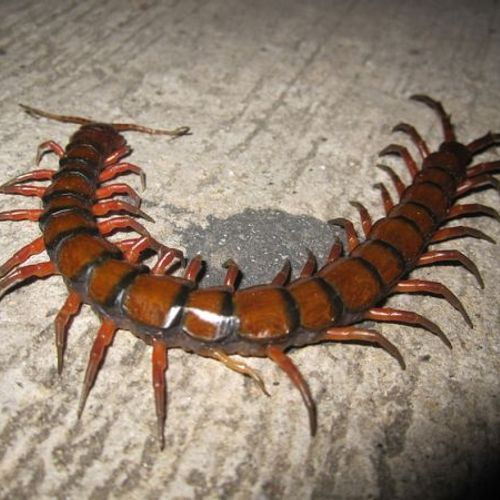
| Added | Thu, 25/07/2024 |
| Источники | |
| Дата публикации | Wed, 24/07/2024
|
| Версии |
It would seem difficult to lose something as large and multi-legged as a giant centipede, but scientists have managed to do it. One species of millipede has been lost for more than 126 years. Fortunately, it was rediscovered in the Makira Forest in Madagascar, where it was joined by 20 other extinct species, ranging from ant-like flower beetles to rainbow fish and even jumping spiders.
The giant centipede in question, the long dark brown Spirostreptus sculptus, was first described by entomologist Henri de Saussure and naturalist Leo Zentner in 1897, when it was discovered in Madagascar. However, since then, encounters with the insect have never been recorded by scientists.
The Re:wild project, which involves team members from many different organizations, aims to find animals that were lost to science more than a decade ago, but are not considered extinct – it is believed that their number is at least 4,300 individuals.
In 2023, as part of this search, volunteers spent several weeks combing the Makira Forest, one of Madagascar's largest protected areas.
"Madagascar is a center for biodiversity conservation, and Makira is a little—studied area in the country, so we decided to try out a new model for searching for endangered species there," explained Re:wild employee Kristina Biggs.
After compiling a list of 30 endangered species, the search was successful, and one of the most unexpected finds was a giant centipede, although it is suspected that it was not lost to local communities at all.
"Personally, I was most surprised and pleased by the fact that the giant centipede Spirostreptus sculptus, which is not uncommon in the Makira forest, turned out to be another extinct species known only from the type specimen described in 1897," said entymologist Dmitry Telnov.
The participant of the expedition also noted: "The longest representative of this species that we observed in Makira was indeed a giant female with a length of 27.5 centimeters."
Although the team was unable to find a number of species from the endangered list, there were many that they rediscovered, including two species of ant-like flower beetles that had not been recorded since 1958, and the jumping spider Tomocyrba decollate, which had been lost since its first discovery in 1900.
On top of that, the expedition discovered a previously unknown species of zebra spiders - a real find, given that they were not believed to live in the tropical forests of Madagascar. After discovering several adults guarding egg sacs in the cave, Brogan Pett, director of the SpiDiverse working group at BINCO, commented:
"They were quite large spiders, and it was amazing that they hadn't been recognized for so long."
The team will be able to return to Makira to make a second attempt to find the species they could not find this time.
"It is important to continue studying the biodiversity of Makira, because although it is one of the largest rainforests in the country, we still have relatively few ideas about what species are found, and there are probably also many completely undescribed species. A better understanding of the biological riches of Makira will allow us to carry out our protection efforts more purposefully," concludes Julie Lynchant from the Madagascar Wildlife Conservation Society.
Новости со схожими версиями
Log in or register to post comments









